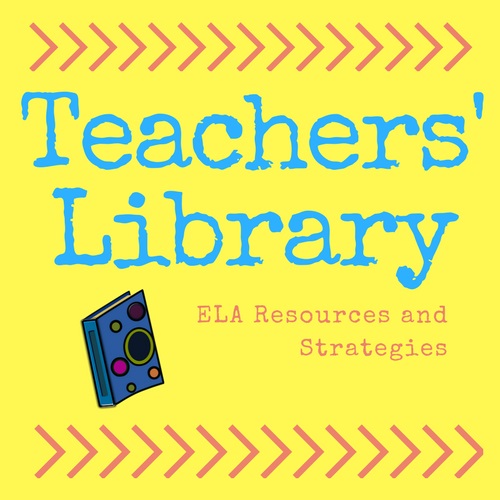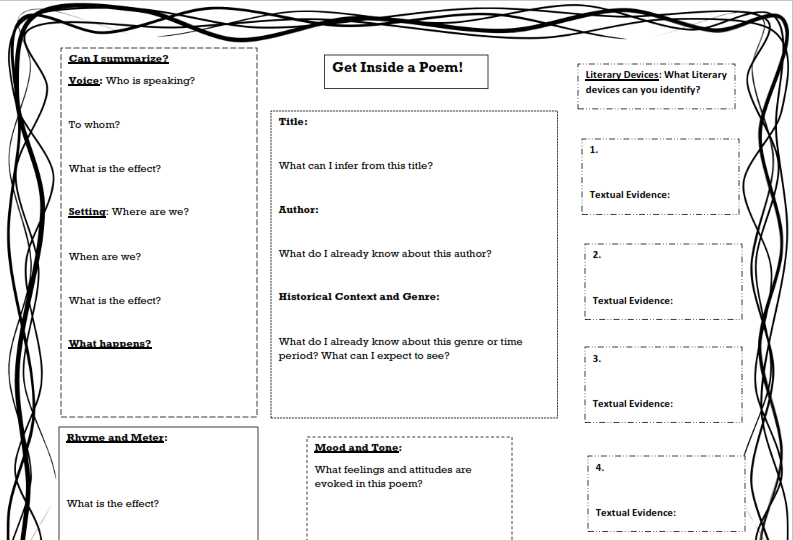This is a very general graphic organizer that I use to encourage students to engage more deeply with a poem. Students tend to be more passive when they read poetry, for all kinds of reasons, and often need to be explicitly (and repeatedly) asked to use all the tools in their arsenal to access a poem.
 Loading...
Loading...
This graphic organizer is never used as a summative assessment, rather it’s a way for students to:
- Engage with the language and analyze the effects of the language
- Use existing knowledge to draw inferences
- Break down the dense, moving parts of a poem in manageable pieces
- Record textual evidence for written responses (which may be used as summative assessments)
This organizer requires a bit of explanation to the students:
- DO NOT write in complete sentences. This is a brainstorming tool.
- There’s no one perfect place to start. Start with the title, start with the rhyme, start with whatever jumps out at you and see where it takes you.
- Yes, it’s small. I only ask students to give me the line of poetry as textual evidence for a literary device, not to copy out the entire quote. Accurately citing textual evidence is its own lesson.
For example, if a student identifies the use of imagery, they must only write imagery and l. 19 as textual evidence.
Because the organizer is quite small, I often project it and have students create larger, colorful, even illustrated versions on flip-chart paper in groups of 2-4.
Differentiation Idea: Assign different roles in the group
- The beginner students identify literary title, author, rhyme, and literary devices.
- Intermediate learners can begin to draw inferences and make hypothesis from title, author, historical context, etc.
- More proficient poetry readers can begin to interpret and articulate the effects.
Extra: I have found Annabel Lee, by Edgar Allan Poe, to be a great first piece of poetry for middle and high school. It’s accessible and beautiful.
[insert_php]
// INSTRUCTIONS: array(“url”,”title”,”type”,”size”),
// AND only the last array() line does NOT have a comma at the end
$downloads = array(
array(“https://www.theteacherslibrary.com/wp-content/uploads/2016/08/poetry-graphic-organizer.docx”,”Download poetry graphic organizer”,”docx”,”435kb”),
array(“https://www.theteacherslibrary.com/wp-content/uploads/2016/08/poetry-graphic-organizer.pdf”,”Download poetry graphic organizer”,”pdf”,”629kb”)
);
insertDownloads($downloads);
[/insert_php]

